Finite Element Model of Scoliosis Brace with Increased Utility Characteristics
Abstract
:1. Introduction
2. Materials and Methods
2.1. Boston Spinal Bracing System
2.2. Modeling Using Finite Element Method
3. Results
3.1. Computational Examinations of the Original Orthosis
3.2. Computational Examinations of the Modified Orthosis
3.3. Numerical Tests of Corsets with Increased Levels of Thermal Comfort and Gas Exchange
4. Discussion
5. Conclusions
Author Contributions
Funding
Institutional Review Board Statement
Informed Consent Statement
Data Availability Statement
Conflicts of Interest
References
- Cobetto, N.; Aubin, C.E.; Parent, S.; Clin, J.; Barchi, S.; Turgeon, I.; Labelle, H. Effectiveness of Braces Designed Using Computer-Aided Design and Manufacturing (CAD/CAM) and Finite Element Simulation Compared to CAD/CAM Only for the Conservative Treatment of Adolescent Idiopathic Scoliosis: A Prospective Randomized Controlled Trial. Eur. Spine J. 2016, 25, 3056–3064. [Google Scholar] [CrossRef] [PubMed]
- Sanz-Pena, I.; Arachchi, S.; Halwala-Vithanage, D.; Mallikarachchi, S.; Kirumbara-Liyanage, J.; McGregor, A.; Silva, P.; Newell, N. Characterising the Mould Rectification Process for Designing Scoliosis Braces: Towards Automated Digital Design of 3D-Printed Braces. Appl. Sci. 2021, 11, 4665. [Google Scholar] [CrossRef]
- Grycuk, S.; Mrozek, P. Scoliosis Brace Finite Element Model and Preliminary Experimental Testing Using Electronic Speckle Pattern Interferometry. Appl. Sci. 2022, 12, 3876. [Google Scholar] [CrossRef]
- Ng, K.J.; Duke, K.; Lou, E. Investigation of Future 3D Printed Brace Design Parameters: Evaluation of Mechanical Properties and Prototype Outcomes. J. 3D Print. Med. 2019, 3, 171–184. [Google Scholar] [CrossRef]
- Liao, Y.-C.; Feng, C.-K.; Tsai, M.-W.; Chen, C.-S.; Cheng, C.-K.; Ou, Y.-C. Shape Modification of the Boston Brace Using a Finite-Element Method With Topology Optimization. Spine 2007, 32, 3014–3019. [Google Scholar] [CrossRef] [PubMed]
- Weiss, H.-R.; Kleban, A. Development of CAD/CAM Based Brace Models for the Treatment of Patients with Scoliosis-Classification Based Approach versus Finite Element Modelling. Asian Spine J. 2015, 9, 661–668. [Google Scholar] [CrossRef]
- Cobetto, N.; Aubin, C.-É.; Parent, S.; Barchi, S.; Turgeon, I.; Labelle, H. 3D Correction of AIS in Braces Designed Using CAD/CAM and FEM: A Randomized Controlled Trial. Scoliosis 2017, 12, 24. [Google Scholar] [CrossRef] [PubMed]
- Chung, C.L.; Kelly, D.M.; Steele, J.R.; DiAngelo, D.J. A Mechanical Analog Thoracolumbar Spine Model for the Evaluation of Scoliosis Bracing Technology. J. Rehabil. Assist. Technol. Eng. 2018, 5, 1–9. [Google Scholar] [CrossRef] [PubMed]
- Rigo, M.; Jelačić, M. Brace Technology Thematic Series: The 3D Rigo Chêneau-Type Brace. Scoliosis 2017, 12, 10. [Google Scholar] [CrossRef] [PubMed]
- Clin, J.; Aubin, C.-É.; Parent, S.; Labelle, H. Biomechanical Modeling of Brace Treatment of Scoliosis: Effects of Gravitational Loads. Med. Biol. Eng. Comput. 2011, 49, 743–753. [Google Scholar] [CrossRef] [PubMed]
- Périé, D.; Aubin, C.E.; Lacroix, M.; Lafon, Y.; Labelle, H. Biomechanical Modelling of Orthotic Treatment of the Scoliotic Spine Including a Detailed Representation of the Brace-Torso Interface. Med. Biol. Eng. Comput. 2004, 42, 339–344. [Google Scholar] [CrossRef] [PubMed]
- Kajaks, J.; Kalnins, K.; Uzulis, S.; Matvejs, J. Physical and Mechanical Properties of Composites Based on Polypropylene and Timber Industry Waste. Open Eng. 2014, 4, 385–390. [Google Scholar] [CrossRef]
- Weiss, H.-R.; Tournavitis, N.; Nan, X.; Borysov, M.; Paul, L. Workflow of CAD/CAM Scoliosis Brace Adjustment in Preparation Using 3D Printing. Open Med. Inform. J. 2017, 11, 44–51. [Google Scholar] [CrossRef] [PubMed]
- Khlif, M.; Masmoudi, N.; Bradai, C. Polypropylene Tensile Test under Dynamic Loading. J. KONES 2014, 21, 132–138. [Google Scholar] [CrossRef]

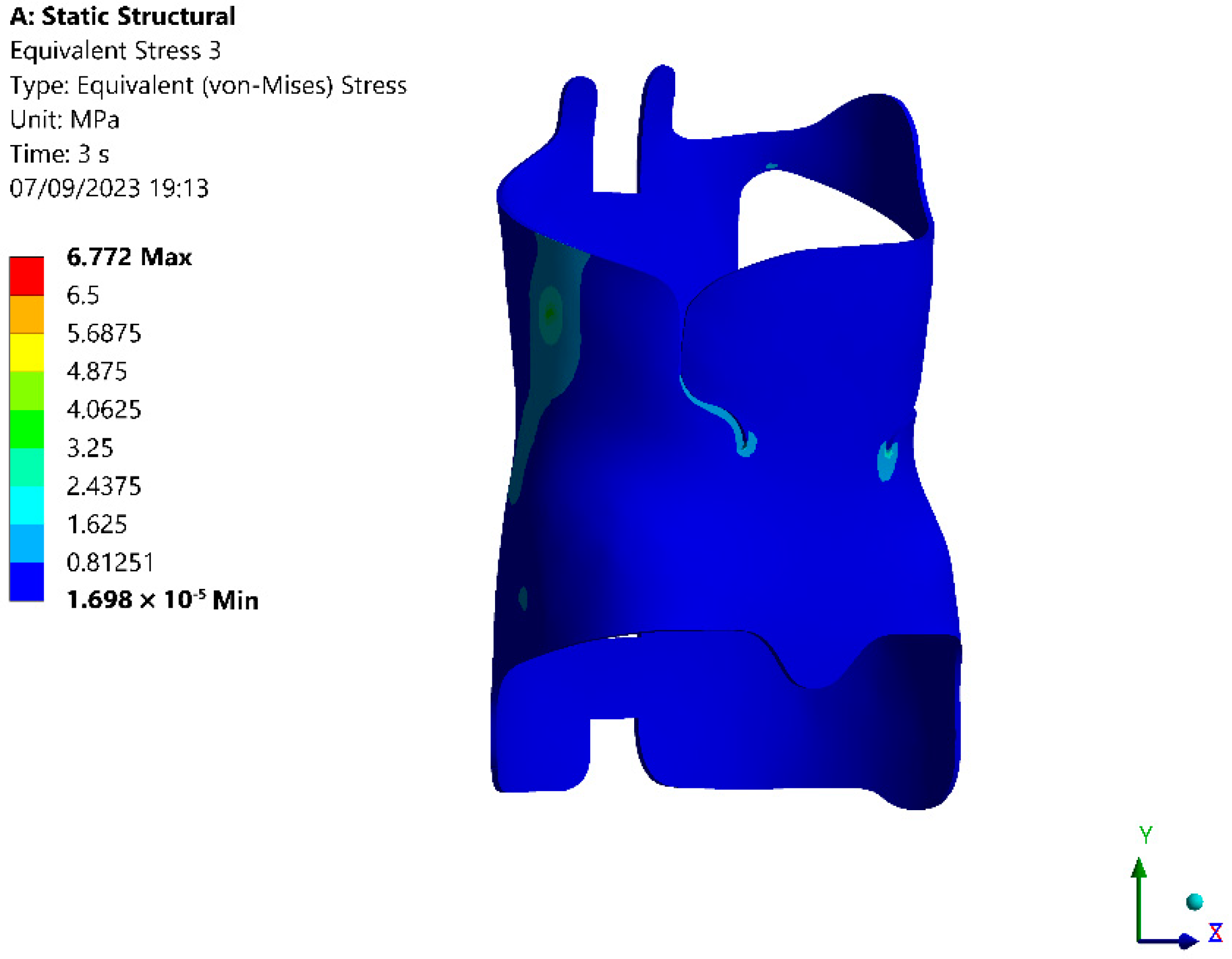
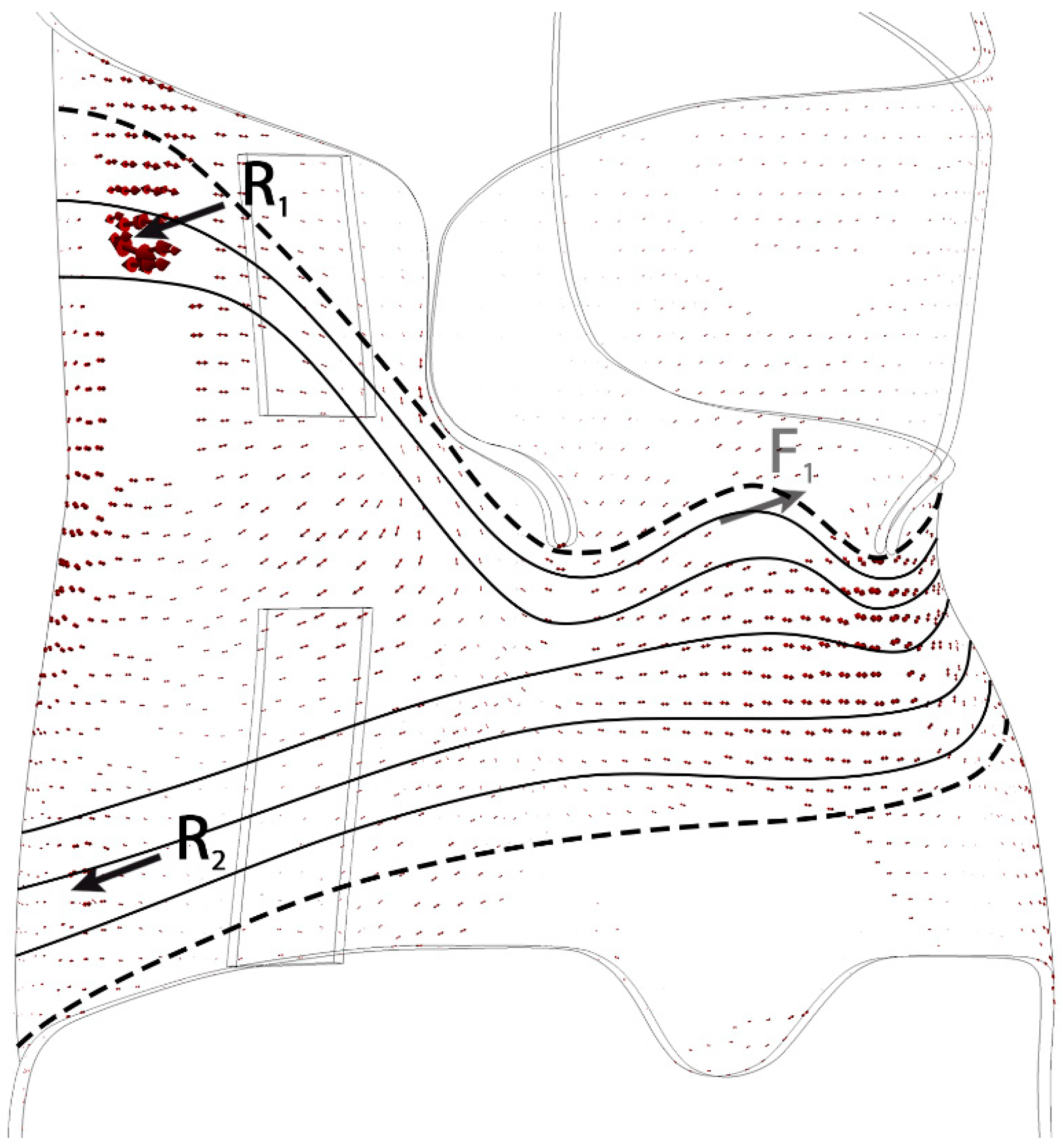

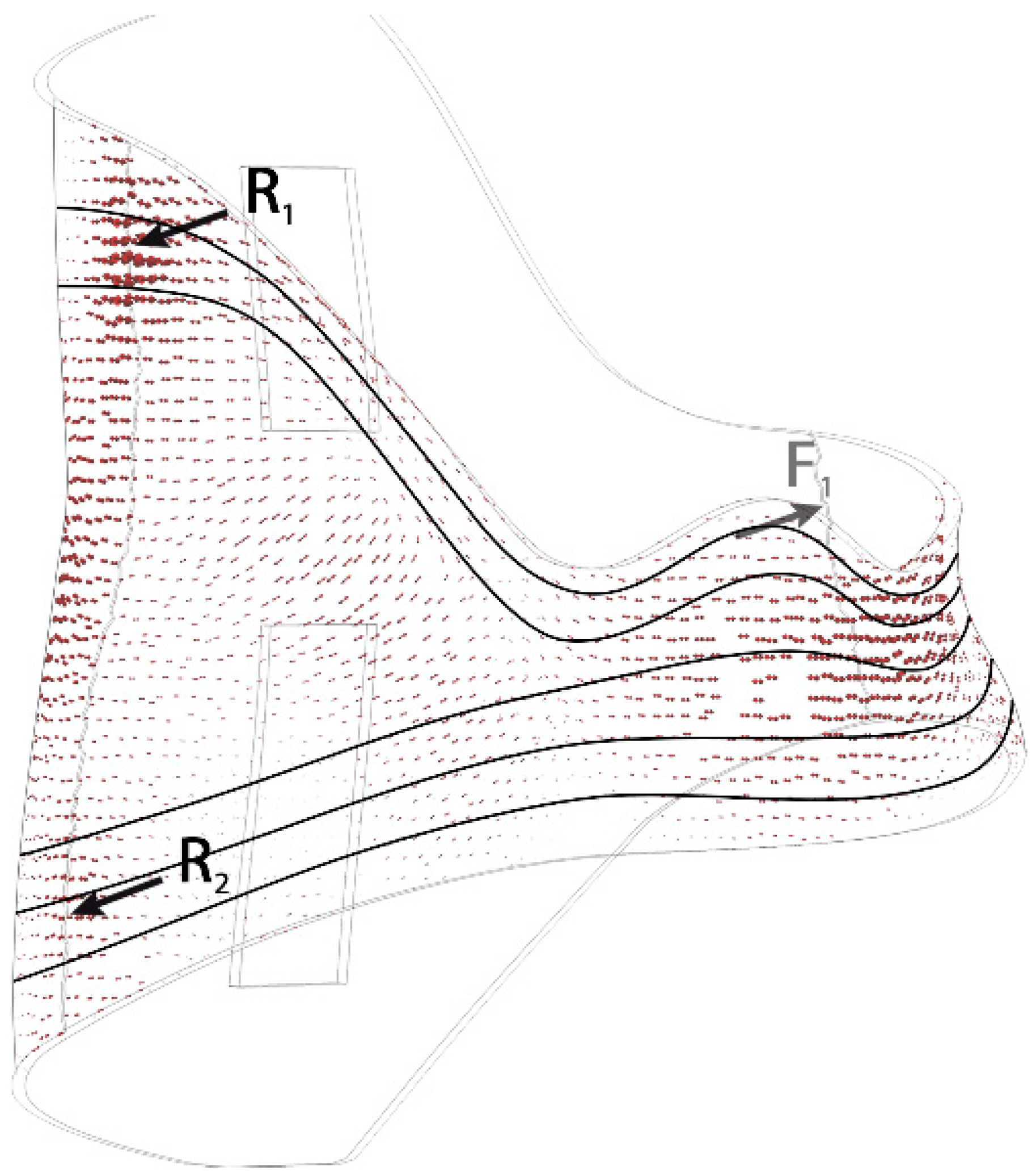

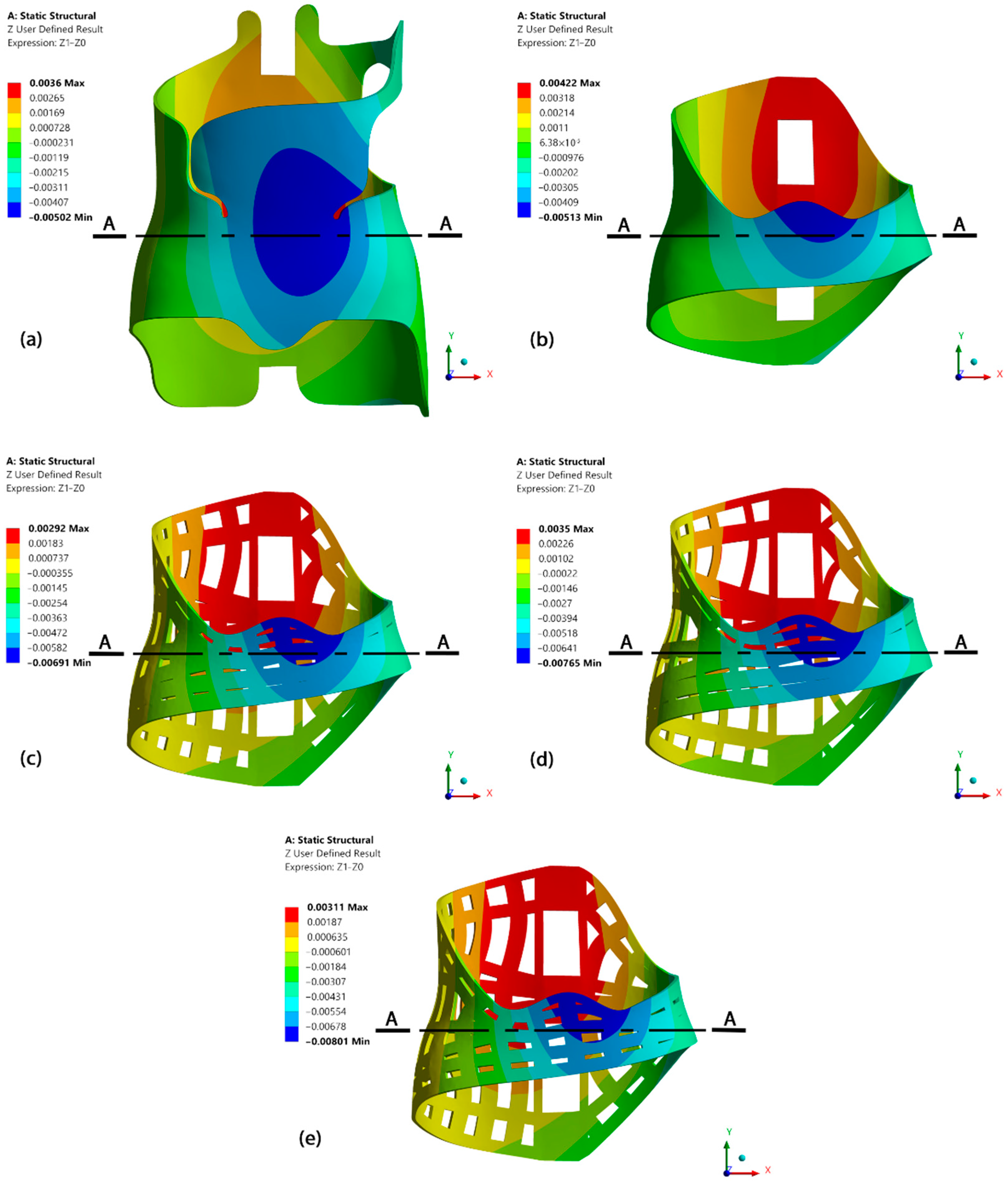
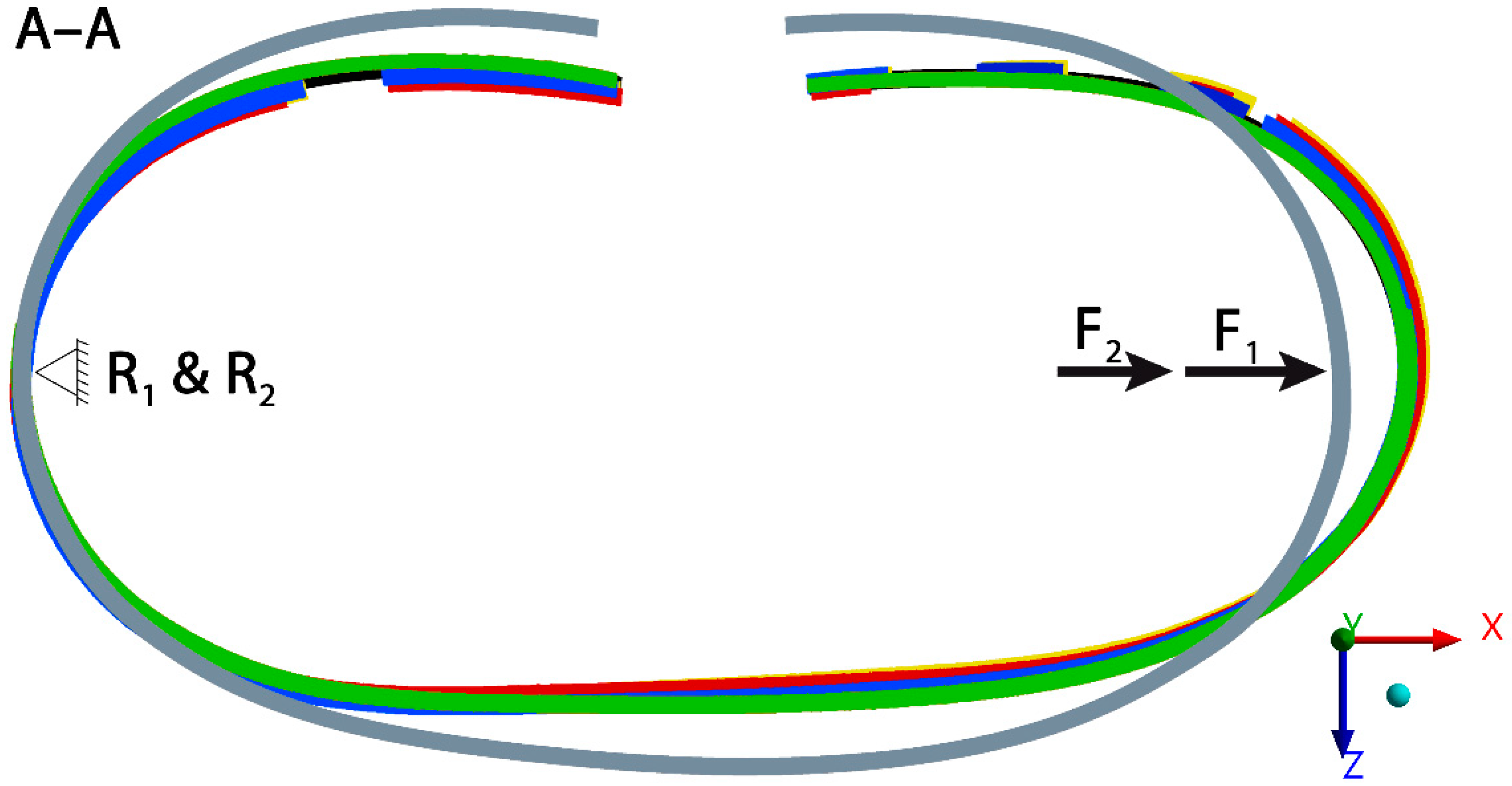
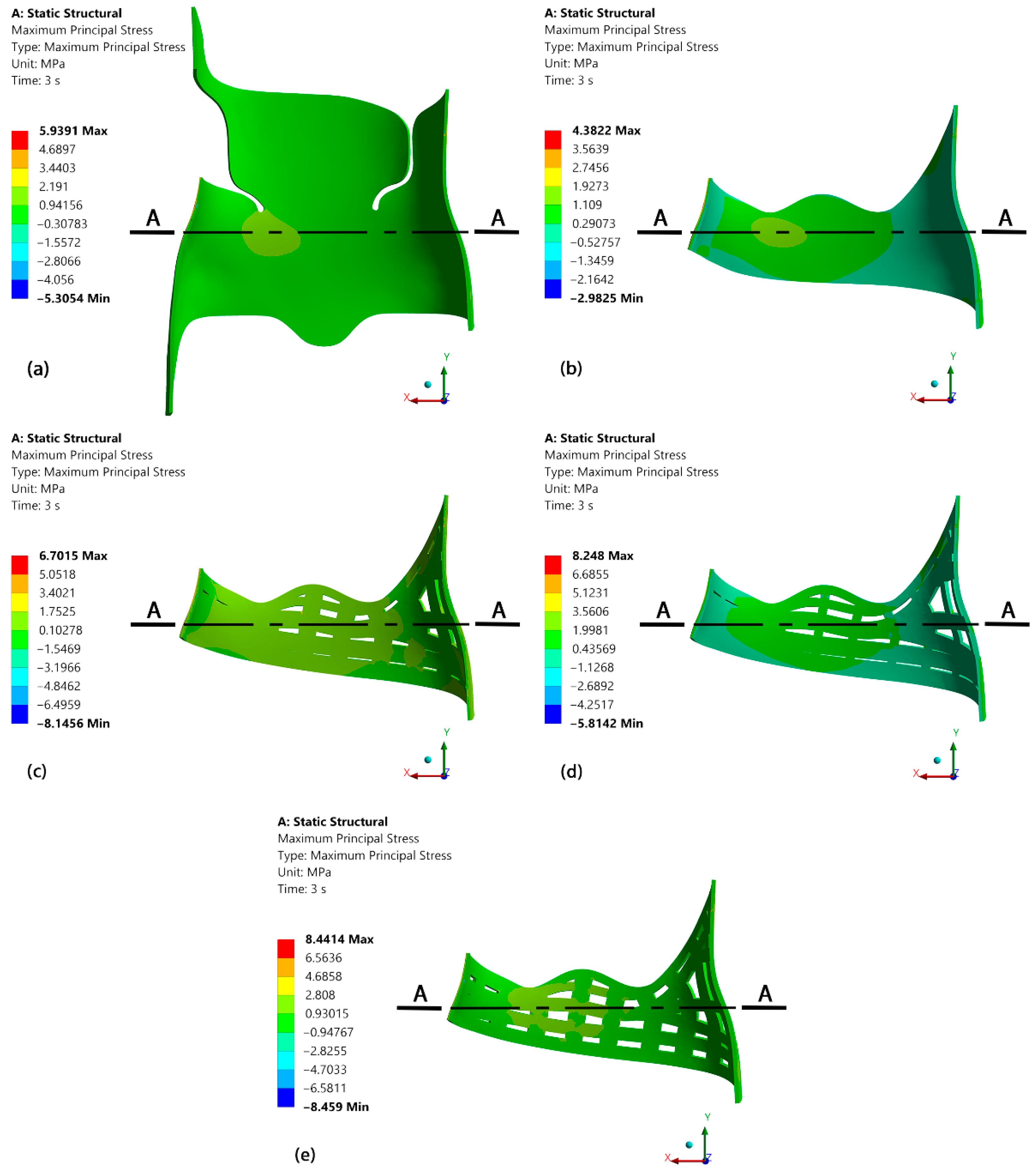
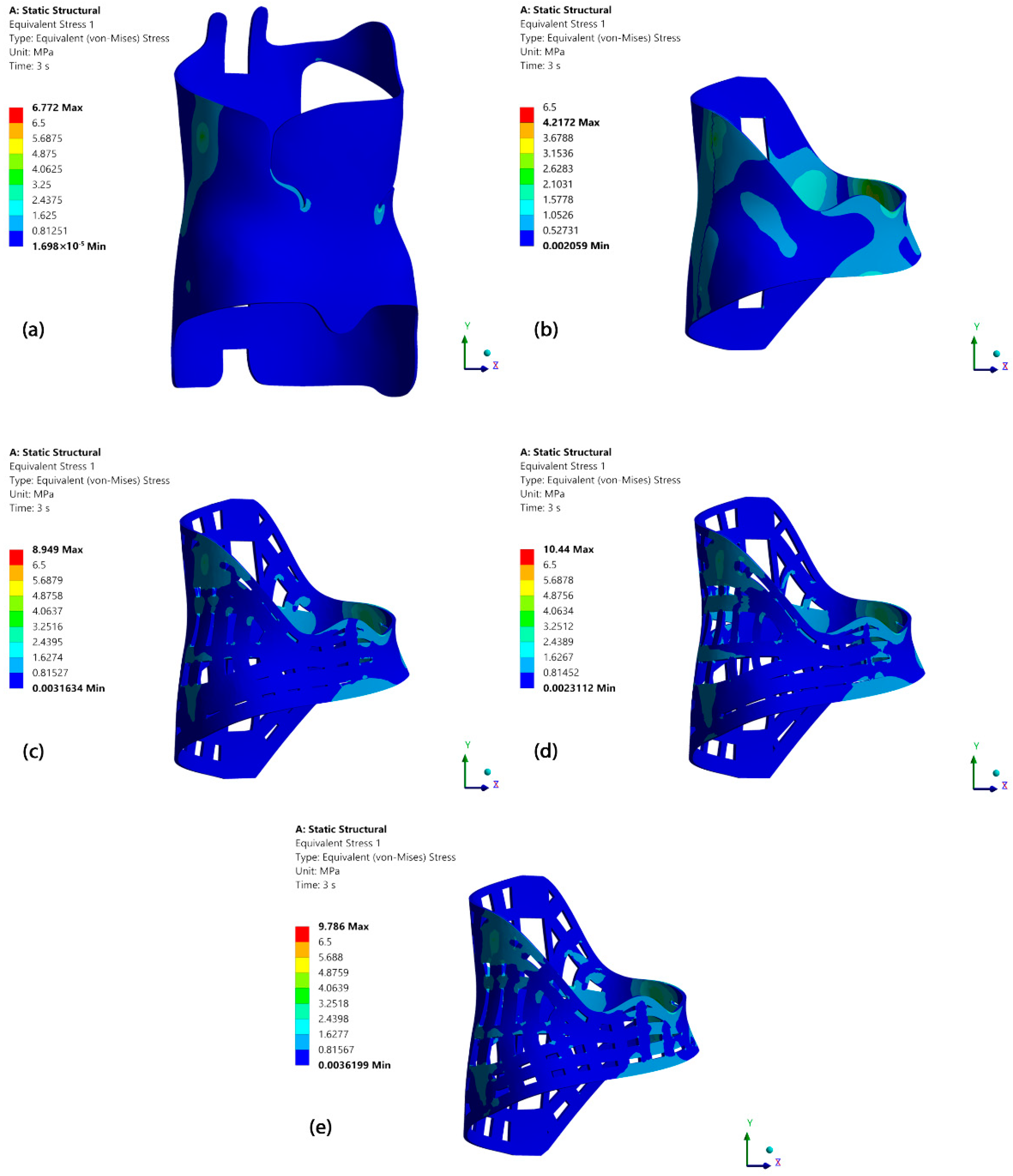
| Corset Variant | Point 1 (mm) | Point 2 (mm) | Point 3 (mm) | Point 4 (mm) | Point 5 (mm) |
|---|---|---|---|---|---|
| Original brace | −0.0001 | −0.0026 | −0.0044 | −0.0042 | −0.0016 |
| Modified brace | −0.0003 | −0.0019 | −0.0040 | −0.0037 | −0.0015 |
| Corset Variant | Mass (g) | ΔX Max (µm) |
|---|---|---|
| Original brace | 895 | 7.1 |
| Modified brace | 524 | 7.0 |
| Openwork corset variant A | 532 | 7.1 |
| Openwork corset variant B | 497 | 7.8 |
| Openwork corset variant C | 482 | 7.8 |
Disclaimer/Publisher’s Note: The statements, opinions and data contained in all publications are solely those of the individual author(s) and contributor(s) and not of MDPI and/or the editor(s). MDPI and/or the editor(s) disclaim responsibility for any injury to people or property resulting from any ideas, methods, instructions or products referred to in the content. |
© 2023 by the authors. Licensee MDPI, Basel, Switzerland. This article is an open access article distributed under the terms and conditions of the Creative Commons Attribution (CC BY) license (https://creativecommons.org/licenses/by/4.0/).
Share and Cite
Grycuk, S.; Mrozek, P. Finite Element Model of Scoliosis Brace with Increased Utility Characteristics. Appl. Sci. 2023, 13, 13273. https://doi.org/10.3390/app132413273
Grycuk S, Mrozek P. Finite Element Model of Scoliosis Brace with Increased Utility Characteristics. Applied Sciences. 2023; 13(24):13273. https://doi.org/10.3390/app132413273
Chicago/Turabian StyleGrycuk, Slawomir, and Piotr Mrozek. 2023. "Finite Element Model of Scoliosis Brace with Increased Utility Characteristics" Applied Sciences 13, no. 24: 13273. https://doi.org/10.3390/app132413273





